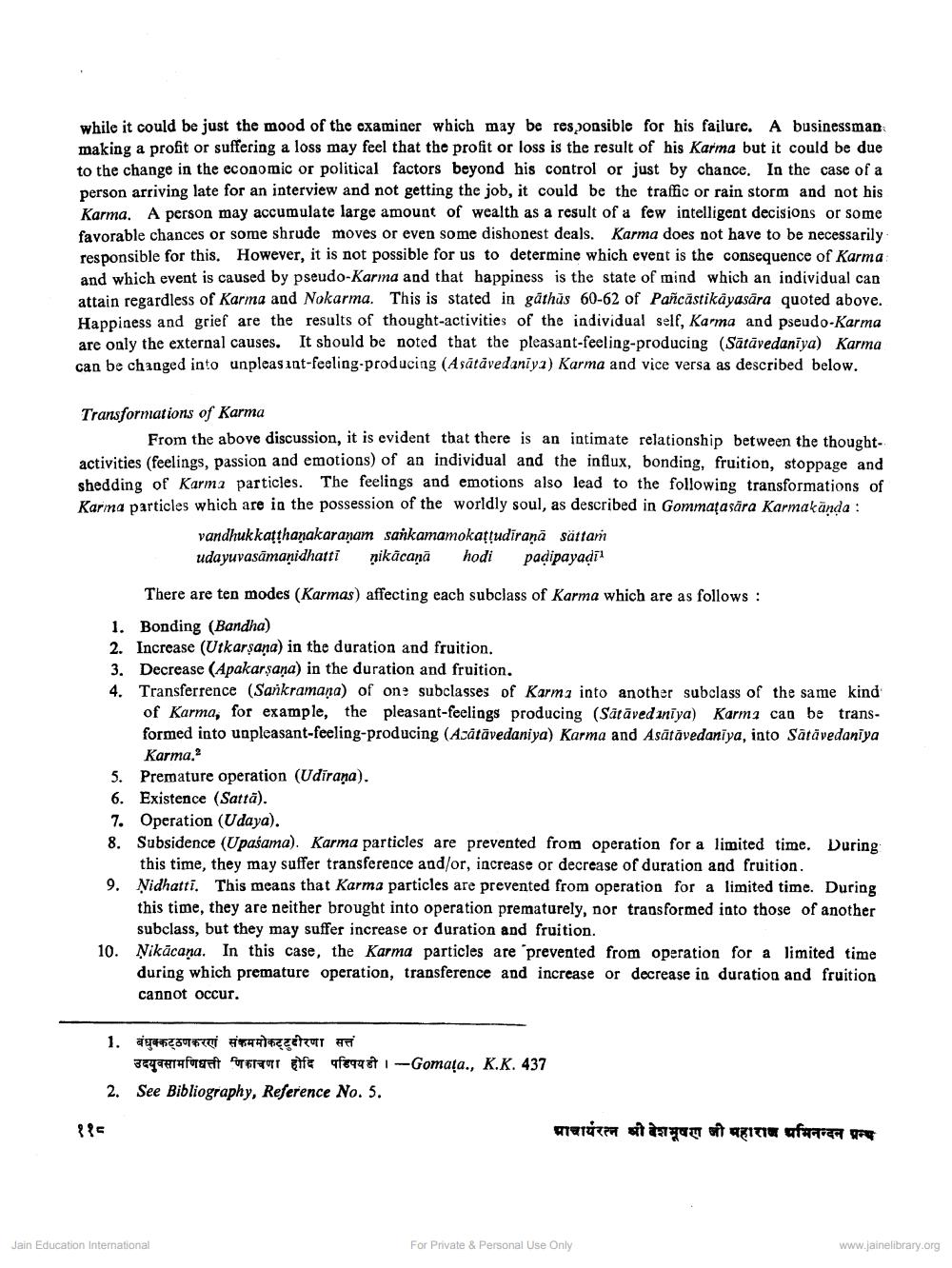Book Title: How Karma theory relates to Modern Science Author(s): Dulichand Jain Publisher: Z_Deshbhushanji_Maharaj_Abhinandan_Granth_012045.pdf View full book textPage 7
________________ while it could be just the mood of the examiner which may be responsible for his failure. A businessman making a profit or suffering a loss may feel that the profit or loss is the result of his Karma but it could be due to the change in the economic or political factors beyond his control or just by chance. In the case of a person arriving late for an interview and not getting the job, it could be the traffic or rain storm and not his Karma. A person may accumulate large amount of wealth as a result of a few intelligent decisions or some favorable chances or some shrude moves or even some dishonest deals. Karma does not have to be necessarily responsible for this. However, it is not possible for us to determine which event is the consequence of Karma and which event is caused by pseudo-Karma and that happiness is the state of mind which an individual can attain regardless of Karma and Nokarma. This is stated in gathus 60-62 of Pañcastikāyasāra quoted above. Happiness and grief are the results of thought-activities of the individual self, Karma and pseudo-Karma are only the external causes. It should be noted that the pleasant-feeling-producing (Sātāvedaniya) Karma can be changed into unpleasant-feeling-producing (Asātāvedaniya) Karma and vice versa as described below. Transformations of Karma From the above discussion, it is evident that there is an intimate relationship between the thoughtactivities (feelings, passion and emotions) of an individual and the influx, bonding, fruition, stoppage and shedding of Karma particles. The feelings and emotions also lead to the following transformations of Karma particles which are in the possession of the worldly soul, as described in Gommatasära Karmakanda : vandhukkatthanakaraṇam sakkamamokattudiraṇā sattam udayuvasimanidhatt nikācaṇā hodi paḍipayaḍī1 There are ten modes (Karmas) affecting each subclass of Karma which are as follows: 1. Bonding (Bandha) 2. Increase (Utkarṣaṇa) in the duration and fruition. ११ 3. Decrease (Apakarṣaṇa) in the duration and fruition. 4. Transferrence (Sankramana) of one subclasses of Karma into another subclass of the same kind of Karma, for example, the pleasant-feelings producing (Sätāvedaniya) Karma can be transformed into unpleasant-feeling-producing (Azātāvedaniya) Karma and Asātāvedaniya, into Sātāvedaniya Karma.2 5. Premature operation (Udirana). 6. Existence (Sattā). 7. Operation (Udaya). 8. Subsidence (Upasama). Karma particles are prevented from operation for a limited time. During this time, they may suffer transference and/or, increase or decrease of duration and fruition. 9. Nidhatti. This means that Karma particles are prevented from operation for a limited time. During this time, they are neither brought into operation prematurely, nor transformed into those of another subclass, but they may suffer increase or duration and fruition. 10. Nikācana. In this case, the Karma particles are prevented from operation for a limited time during which premature operation, transference and increase or decrease in duration and fruition cannot occur. 1. बंधुक्कट्ठणकरणं संकममोकट्टुदीरणा सत्तं उदयुवसामणिधत्ती णिकाचणा होदि पडिपयडी । - Gomata., K.K.437 2. See Bibliography, Reference No. 5. Jain Education International प्राचार्यरत्न श्री देशमुख जी महाराज अभिनन्दन ग्रन्थ sit For Private & Personal Use Only www.jainelibrary.orgPage Navigation
1 ... 5 6 7 8 9 10 11
